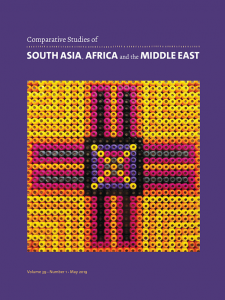Introduction: Multilingual Locals and Textual Circulation before Colonialism
 Against the nationalist production of monolingual literary histories, the special section “Multilingual Locals” urges literary and intellectual historians to “place languages back into dialogue.” Colonialism did not always affect, let alone silence, cultural actors, but it did introduce a language ideology that associated one language to one community, and vice versa. Comparing the precolonial and the colonial period entails looking at multilingual systems, whose internal hierarchies and regional/transnational power dynamics evolved in time, but without reducing the plurality of languages involved. The essay suggests different ways in which we can place languages back into dialogue. One is looking at multilingual traces within a given text; another approach moves beyond the text to explore how multilingual canons and curricula were embodied in individuals or coexisted within the same social space. A third approach is an analysis of circuits and circulation. Finally, multilingualism can be turned into the plural as a study of comparative multilingualisms. Through these and other approaches, we can trace how colonial languages reorganized multilingual language systems but were far from replacing them, contrary to the stated objectives of monolingual nationalist ideologies.
Against the nationalist production of monolingual literary histories, the special section “Multilingual Locals” urges literary and intellectual historians to “place languages back into dialogue.” Colonialism did not always affect, let alone silence, cultural actors, but it did introduce a language ideology that associated one language to one community, and vice versa. Comparing the precolonial and the colonial period entails looking at multilingual systems, whose internal hierarchies and regional/transnational power dynamics evolved in time, but without reducing the plurality of languages involved. The essay suggests different ways in which we can place languages back into dialogue. One is looking at multilingual traces within a given text; another approach moves beyond the text to explore how multilingual canons and curricula were embodied in individuals or coexisted within the same social space. A third approach is an analysis of circuits and circulation. Finally, multilingualism can be turned into the plural as a study of comparative multilingualisms. Through these and other approaches, we can trace how colonial languages reorganized multilingual language systems but were far from replacing them, contrary to the stated objectives of monolingual nationalist ideologies.


Leave A Comment